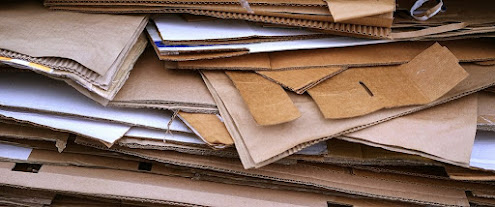E-waste Recycling and Adelaide Rubbish Removal Services that Protect the Environment and The Lives of People
E-waste, also known as electronic waste, refers to any electronic or electrical equipment that has outlived its useful life and has been discarded. Electronic waste contains hazardous wastes like mercury and brominated flame retardants. Not properly disposing of electronic waste not only increases the likelihood that these hazardous wastes will be released into the environment, but it also increases the risk of groundwater contamination due to leachate.
E-waste can include a variety of waste types, such as:
Home
appliances: Home entertainment devices, heaters, microwaves,
refrigerators, vacuum cleaners, air conditioners, solar panels, etc.
Electronic
utilities: Heating pads, treadmills, smart watches, smart monitors,
remote controls
Office
and medical equipment: Wi-Fi dangles, IT servers, audio, and video
equipment, power distribution systems (PDS), imaging equipment, etc.
Hazardous elements that can
be released into the environment, such as lead, mercury, cadmium, phosphor, and
beryllium, may also be present in electronic waste. These hazardous wastes are
not only harmful to ecosystems, but they can also accumulate in the food chain
and have an immediate negative impact on human health.
Systematic
approach to e-waste recycling
E-waste recycling in
Adelaide is essential for establishing a circular economy in which discarded
electronic waste is recycled into the supply chain for the production of new
products. The Adelaide Waste and Recycling Centre's e-waste
recycling Adelaide facility takes a methodical and step-by-step
approach to e-waste recycling. It is separated manually or mechanically using methods
such as magnetic separation or water separation. The segregated e-waste is
delivered to the appropriate e-waste recycling facility in Adelaide for
recycling. Batteries are sorted for recycling based on their chemistry, which
can be lithium-ion, nickel-cadmium, lead-acid, or nickel-metal-hydride.
Recycling
valuables from e-waste
Plastic is recycled by
e-waste recycling in Adelaide to make items such as vineyard sleepers,
insulators, fence posts, and so on. Glass can be extracted from Cathode Ray Tubes
(CRTs). Over-band magnets are used to separate ferrous and non-ferrous metals.
Copper, silver, gold, tin, palladium, and other valuable metals are extracted
from circuit boards. Hard disks are commonly used to recover aluminium ingots.
This way, e-waste recycling in Adelaide by the Adelaide Waste and Recycling
Centre keeps e-waste out of landfills while also conserving the resources used
to recycle it. Recycling also saves raw materials that can be repurposed by
producing new devices, as well as energy.
Adelaide Waste and Recycling
Centre uses cutting-edge techniques for Adelaide rubbish
removal. At its North Plympton facility, the company accepts and treats
a variety of waste types, including tyres, cardboard, and green waste.
Recycling
of green waste
Green waste typically
consists of grass clippings, flowers, twigs, leaves, and food scraps. Green
waste has a high nitrogen concentration, and recycling it produces
nutrient-rich manure that can be used to grow plants. Adelaide Waste and
Recycling Centre recycles green waste at a special decomposting site. Any
compostable material is removed, and the remaining waste is shredded and laid
out in long piles. The composting process can take anywhere from 8 to 16 weeks,
depending on the final product.
Green waste with woody
components can be used to make topsoil. Using industrial waste such as coal
dust or fly ash in conjunction with green waste rich in woody components helps
to increase the topsoil's water-holding capacity. Adelaide Waste and Recycling
Centre ensures that the recycled product is safe for use in agriculture by
co-composting green waste and sewage waste. Green waste recycling also produces
biogas, which can be used as a biofuel. Cellulosic ethanol is produced by
decomposing green waste that does not contain any food waste.
Recycling
corrugated cardboard
Corrugated cardboard of any
type can be recycled. Corrugated cardboard can be recycled nearly 80 percent of
the time, but each time it is recycled, its fiber holding capacity decreases
slightly. When the fiber is too thin to make strong corrugated cardboard, it is
used to make chipboard, paperboard, and cereal boxes. Cardboard recycling saves
water because less water is used because the recycled cardboard has already
been processed. It also saves trees, as one ton of recycled cardboard paper
saves approximately 10 to 30 trees, thereby contributing to the resolution of
the global warming problem.



.jpg)
Comments
Post a Comment